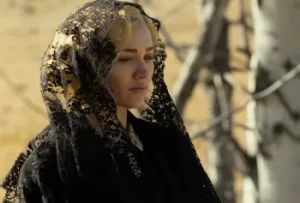Here’s a dramatic, vintage-style entertainment news piece imagining a casting shake-up between 1923 to 1944, under a classic Hollywood lens — full of studio intrigue, rising stars, and the eternal question: Who’s in and who’s out? 🌟🎬🗞
🌟 1923 to 1944: Stars Eye Roles — Who’s In and Who’s Out in Golden Age Hollywood? 🎬🗞
As the roaring ’20s gave way to the golden glow of the ’30s and the wartime seriousness of the early ’40s, Hollywood remained a battlefield of ambition, talent, and scandal. From studio-backed darlings to blacklisted hopefuls, the biggest question on every casting director’s lips was always: who gets the part — and who’s headed for the shadows?
Let’s take a nostalgic stroll through some of the era’s biggest casting coups and heartbreaks…
🎥 1920s: The Silent Screen’s Final Roar
By 1923, Gloria Swanson was at the top of her game — but she wasn’t the only one eyeing big roles. It’s said she nearly lost the lead in Bluebeard’s 8th Wife to Norma Talmadge, who had just made waves with her dramatic chops. In the end, Swanson’s charm — and her ties to director Ernst Lubitsch — sealed the deal.
Meanwhile, Louise Brooks infamously turned down several roles at Paramount, believing she deserved better scripts. By 1929, that resistance cost her dearly as studios quietly blackballed her — a bold “out” for a star so young.
🎬 1930s: Talkies, Triumphs, and Tears
As the talkies took over, casting politics shifted fast.
Jean Harlow, with her platinum hair and bombshell persona, was originally not the first pick for Red Dust (1932). That role was intended for Joan Crawford, but MGM made a sudden swap — and Harlow became a legend.
Over at Warner Bros., Bette Davis was battling tooth and nail for serious roles. She was nearly passed over for Of Human Bondage (1934), until she made a personal plea — and delivered a performance that redefined her career. That role put her firmly in while a rival, Kay Francis, began to fade.
Marlene Dietrich, meanwhile, saw her star wane briefly in the mid-1930s after a string of flops. Studio execs quietly removed her from several leading roles (including Golden Boy, later given to Barbara Stanwyck) before she bounced back in the early ’40s.
🎭 1940s: Wartime Hollywood — Rising Stars & Falling Icons
As the 1940s rolled in, casting began to favor more grounded, gritty performers — often to the benefit of actors like Humphrey Bogart, who had long languished in supporting roles. After being passed over for years (even High Sierra was first offered to Paul Muni!), Bogart finally got his due, and by 1944, he was firmly in with To Have and Have Not.
Ingrid Bergman rose like a comet after Casablanca (1942), but insiders whispered that Greer Garson nearly snagged that role. Imagine the alternate history…
Meanwhile, Judy Garland was both in and out depending on the year. Her massive success in The Wizard of Oz (1939) gave her box office clout, but by 1944, reports of emotional struggles and missed shoots put her status in question.
And then there’s Orson Welles — the wonder boy who shook the town with Citizen Kane (1941). Studios gave him carte blanche — until The Magnificent Ambersons underperformed. By 1944, he was labeled “difficult,” and many top projects quietly dropped him. A genius? Yes. But out? Arguably, for the moment.